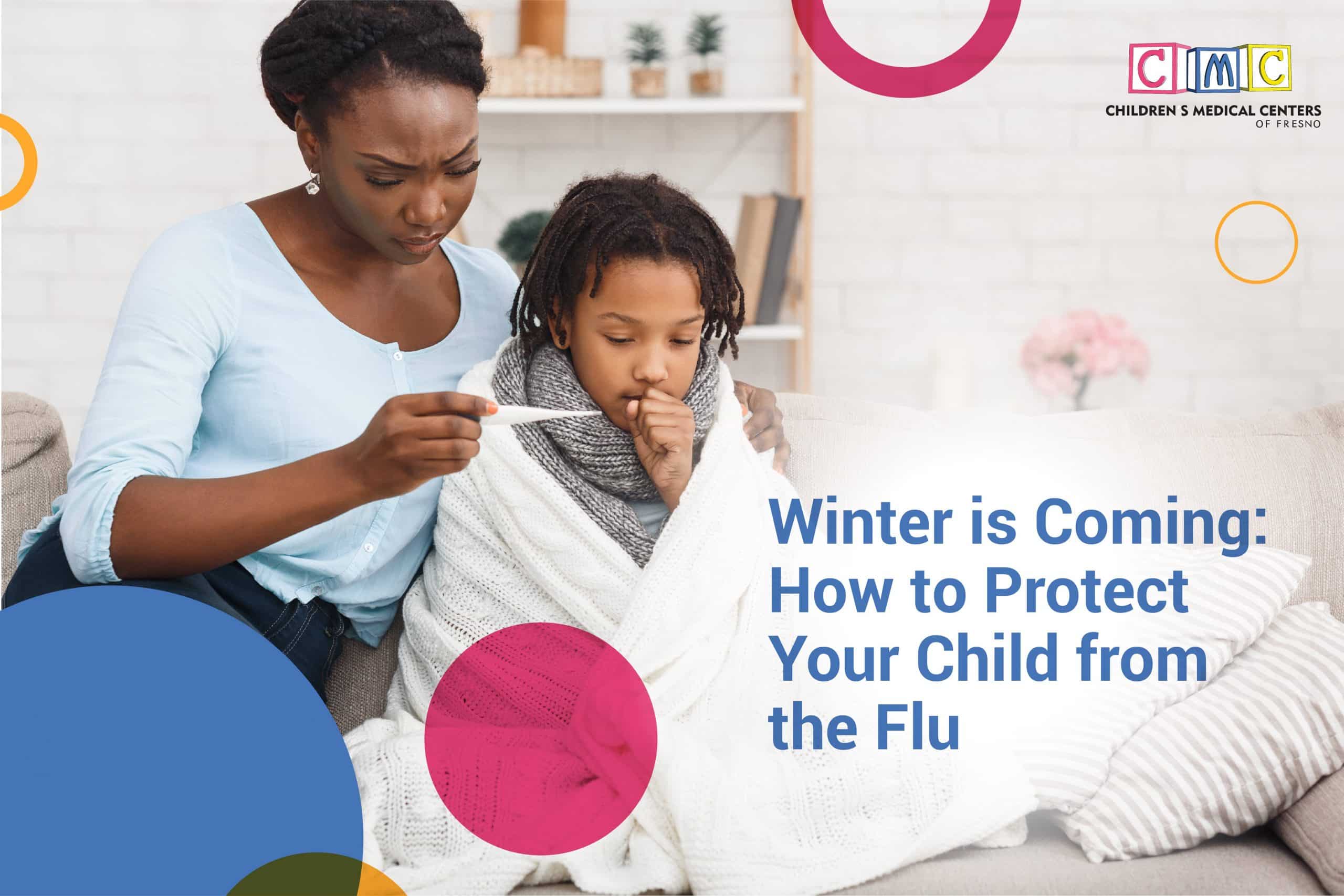Since the Covid-19 has primarily been spreading since last year, flu levels were so low that immunity to the disease has declined. As a result, we may experience a more severe flu season this year.
Most at risk are children, who also have lower immunity to influenza since lockdowns limit their exposure to it. As children return to school and potentially become unwell, there is a greater chance that they’ll be prone to the illness.
This is why it’s more important than ever for children and even adults to get their flu vaccines as soon as possible. Children aged 5 and above are now eligible for the Pfizer-BioNTech COVID-19 Vaccine too.
Flu season is a time that comes around each year, and we cannot escape it. However, preparing for it or taking proactive steps to combat the flu is the best step you can take.
This article gives you all the info you need about the flu, including winter health tips to protect yourself, your children, and others from the illness.
What Every Parent Needs to Know About the Flu
Influenza, also called the flu, is an upper respiratory viral illness caused by various influenza virus strains. It primarily affects the nose, throat, and lungs, but it can affect other parts of the body too. Flu viruses tend to be more common in the winter (thus the name seasonal or winter flu), as we stay indoors more during the winter, allowing them to spread rapidly. Influenza is highly infectious. A person with influenza can spread the disease quickly when they cough or sneeze and release viral droplets into the air. Additionally, it can be transmitted by infected hands.
Children are at high risk for the flu.
Unlike most adults, children don’t have a fully developed immune system, so they get very sick from the flu. Flu causes millions of children to fall ill every year; thousands end up in the hospital, and in rare cases, some even die due to severe complications. In the United States, the CDC estimates that flu-related hospitalizations in children have ranged between 7,000 and 26,000 since 2010.
The risk of developing severe flu complications is highest in children under five years of age – especially those younger than two and those with chronic medical conditions. Pneumonia, dehydration, asthma, sinus problems, ear infections, influenza-induced encephalopathy are flu complications.
Symptoms of the Winter Flu
Flu symptoms usually appear one to three days after becoming infected, and it usually lasts for seven days. Your child may experience any or all of these symptoms:
- Headache
- Chills
- Muscle aches
- Cough
- Sore throat
- Clogged or runny nose
- Extreme fatigue and weakness
- Sudden fever with a temperature of 38°C or above
Children who can’t yet communicate their symptoms, such as babies and toddlers, may also display a higher level of fussiness and crying.
When to Seek Emergency Medical Care
If your child displays any of these signs, you should seek emergency medical care immediately.
- Seizures
- Fever above 104°F
- Absence of alertness
- Any fever in children younger than 12 weeks
- Tightening of the ribs or chest pain when breathing
- Severe pain in the chest area
- Breathing difficulties or rapid breathing
- Dehydration, for instance, not urinating for 8 hours, dry mouth, dry tears
- Bluish or grayish nail bed or lips
- Children are in severe pain (refusing to walk)
- Cough or fever that improves but returns or gets worse
- Worsening of chronic medical illnesses
Difference Between Common Cold and Flu
Colds and flu both affect the respiratory system, but different viruses cause them. In general, colds can strike at any time of year, but the flu is generally a seasonal illness. Seasonal flu usually occurs from fall to spring, peaking in the winter. You can tell the difference by looking at the symptoms. Colds typically develop gradually, whereas flu symptoms appear suddenly. There are also symptoms of the flu that are not typical of colds, such as chills, dizziness, and muscle aches.
Unlike a cold, flu can escalate to a serious condition such as pneumonia and ear infections. If you’re wondering how to prevent the common cold in winter, you can take the same approach as you do when preventing the flu. You can find more information in the CDC guide.
7 Steps Parents Can Do to Protect Children and Others This Flu Season
It is important to take precautionary measures to reduce the spread of the flu virus. Listed below are a few ways to help you protect your child and others from the flu.
Get your child vaccinated against the flu.
Flu vaccination provides the best protection against the winter flu. The CDC recommends that everyone six months of age and older receive a vaccination every year with an age-appropriate, licensed flu vaccine provided by your pediatrician.
As it takes about two weeks for bodies to build antibodies to the flu virus after vaccination, it’s best to be proactive and seek vaccination before influenza spreads in your community. Be aware that the Covid vaccine is only one part of getting your child vaccinated. There are a lot more illnesses your child needs protection from.
Teach them proper cough and sneeze etiquette
When they cough or sneeze, make sure they cover their nose and mouth with a tissue. Be sure to throw away dirty tissues and wash their hands quickly afterward. If they don’t have a tissue, they can use their sleeve or elbow. In addition, discourage them from touching their face, nose, or eyes. This is a common way for germs to spread.
Practice proper hygiene
This tip is perhaps the most widely known among child health tips, but it should not be overlooked. Keeping their bodies clean, especially their hands, are part of proper hygiene. Make sure that they take warm baths during the winter and that they wash their hands frequently. Remind them that proper hand washing requires soap and should last at least 20 seconds. When hand washing is not possible, antibacterial hand sanitizers are another effective option.
Take proper steps to boost immunity
Eating well is important during any season, but especially so during flu season. Provide your kids with immune-boosting foods such as fruits and vegetables. As a booster, you can also add vitamin and mineral gummies. Moreover, staying healthy requires adequate sleep. In general, doctors recommend children sleep for ten to twelve hours a day. And don’t forget their exercise!
Clean and disinfect
Viruses can survive on surfaces for up to three hours, so you should regularly disinfect your home, especially if someone in your family is already ill. Clean and disinfect surfaces using soap, water, and antibacterial products. Using these products in your home can help prevent the spread of germs. Pay extra attention to high-touch surfaces like doorknobs, telephones, tables, countertops, tv remotes, and light switches.
Proper clothes for the cold weather
You should dress your children warmly during the winter, typically adding one extra layer over what you would wear for yourself. To keep warm, kids should wear loose-fitting, light clothing under a heavy jacket that fits them well. They should also wear mittens or gloves, a hat, scarf, and waterproof boots when playing outdoors.
Conclusion
We hope that this guide prevents your child from becoming infected with the flu this winter season. If you need medical advice or care for your children, you can always get it from CMCFresno. Please call us at (559) 455-1500 or schedule your appointment conveniently online.



